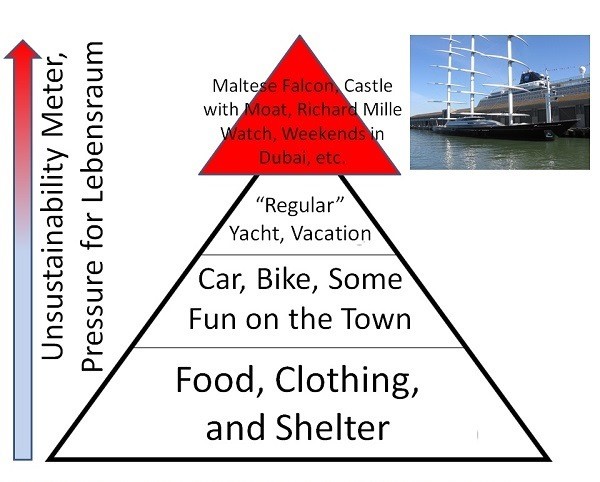Elect More Women: Prerequisite for a Sustainable Economy
by Brent Blackwelder
 In 1990 there were only two women in the U.S. Senate, but in 2013, twenty women will be serving in the Senate, and another 81 women will take office in the House of Representatives. With this record number of Congressional seats held by women, the U.S. is closing in on the global average (20%) for lawmaking bodies. This is good news because evidence suggests that governmental bodies with more women are more likely to tackle issues of social justice and environmental health (and they’ll be more likely to pass budgets that reflect these concerns).
In 1990 there were only two women in the U.S. Senate, but in 2013, twenty women will be serving in the Senate, and another 81 women will take office in the House of Representatives. With this record number of Congressional seats held by women, the U.S. is closing in on the global average (20%) for lawmaking bodies. This is good news because evidence suggests that governmental bodies with more women are more likely to tackle issues of social justice and environmental health (and they’ll be more likely to pass budgets that reflect these concerns).
Especially noteworthy in the U.S. election were the defeats in the Missouri and Indiana Senate races where Todd Akin and Richard Mourdock gained notoriety when they expounded their views on rape. Akin announced that in cases of “legitimate” rape a woman’s body had defenses to avoid pregnancy, and Mourdock asserted that a pregnancy from rape was something that “God willed.”
It’s worth celebrating U.S. electoral gains for women, but there is a long, long way to go. Iceland, for example, has a majority of women filling its university professor positions, and women comprise almost half the members of parliament.
Why is it so important to elect more women to positions of power? And is having 20% of seats enough to make a difference? Researchers Tali Mendelberg and Christopher Karpowitz found that when women make up 20% of a decision-making body that operates by majority rule, the average woman used only 60% of the floor time as the average man. But once women comprise 60 to 80% of such a group, “they spoke as much as men, raised the needs of the vulnerable and argued for redistribution.”
Mendelberg and Karpowitz conclude: “…when there are more women in legislatures, city councils and school boards, they speak more and voice the needs of the poor, the vulnerable, children and families — and men listen. At a time of soaring inequality, electing vastly more women might be the best hope for addressing the needs of the 99 percent.”
Empowerment of women is the centerpiece of the strategy to achieve a sustainable, ecologically sound economy. Here are two of the many reasons for this claim: first is the overarching problem of a growing population. The inexorable momentum of the global population has led to over 7 billion human beings on the earth today and more to come every day.
At dinner tonight on this planet there will be 220,000 mouths to feed that were not present yesterday. Such a figure should cause alarm because the quality of farmland on the planet is being significantly impaired by erosion, by overpumping of ground water, and by the flood/drought cycles being exacerbated by global climate disruption.
Most experts on population growth observe that when women achieve a higher degree of status, respect, and power, they tend to have fewer children. Thus, empowerment of women is a key progressive strategy to stabilize population. In addition, slowing population growth could help reduce future climate-destabilizing emissions.
A second area is government budget priorities. Lawmaking bodies dominated by men spend too much money on war and too little on conservation, protection, and restoration of vital ecosystems. If the majority of members of legislative bodies were women, budget priorities would be influenced by more discussion and debate of sound economic policy.
In contrast to most policy discussions, which spend 90% of the time on the problem and 10% on solutions, I will conclude with two suggestions for continuing the trend of empowering women. First, enact a law that mandates a gender analysis before deploying U.S. foreign assistance in the form of projects, loans, or grants.
It surprises some people to hear that U.S. foreign assistance may be making women worse off. Most aid worldwide is not accompanied by any gender analysis that would answer the basic question: will women be better or worse off as a result of this grant, loan, or matching fund? The nonprofit organization Gender Action offers information and resources for tracking the effects of international financial flows on women.
Second, conduct more robust campaigns to fund family planning services worldwide. Population Action International points out that 215 million women who want to avoid pregnancy lack access to contraception and family planning.
The difference between a world reaching a population of 8 billion people in 2050 as opposed to 9.2 billion is huge. A world of 8 billion would emit roughly two billion fewer tons of carbon – an amount that is equivalent to what would be saved by eliminating all deforestation.



Brent I couldn’t agree with you more. One of the last great social challenges our society faces in the 21st century is uplifting the rights of women. Not only would shattering the glass ceiling would improve economic stability in industrial nations, but would help stymie the birth rate of developing nations. Herman Daly is a contributor to Empirical Magazine, and I invite you to view some of our archived articles at http://empiricalmag.blogspot.com/.
Very good editorial. In a similar vein to this article and CASSE in general, I might suggest a revisit of The Population Bomb. Not a perfect book, but remarkably prescient for the times and quite similar to CASSE, fundamentally. Discussion of overpopulation is, in general, conspicuous by its absence in many discussions of environmental issues, yet it is the common denominator of them all. And, it recognizes the immense value of women.